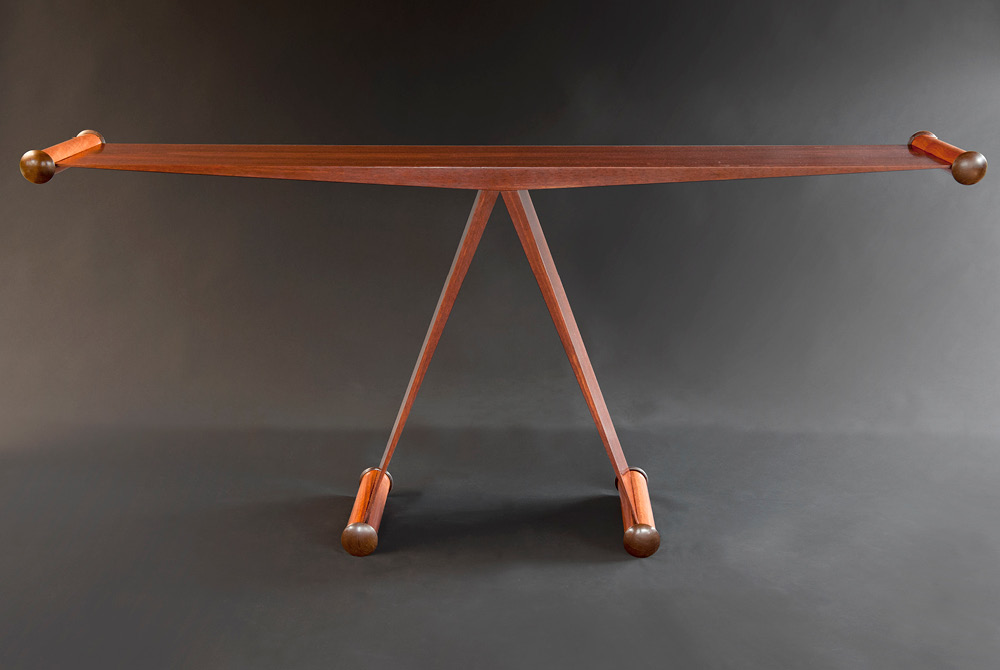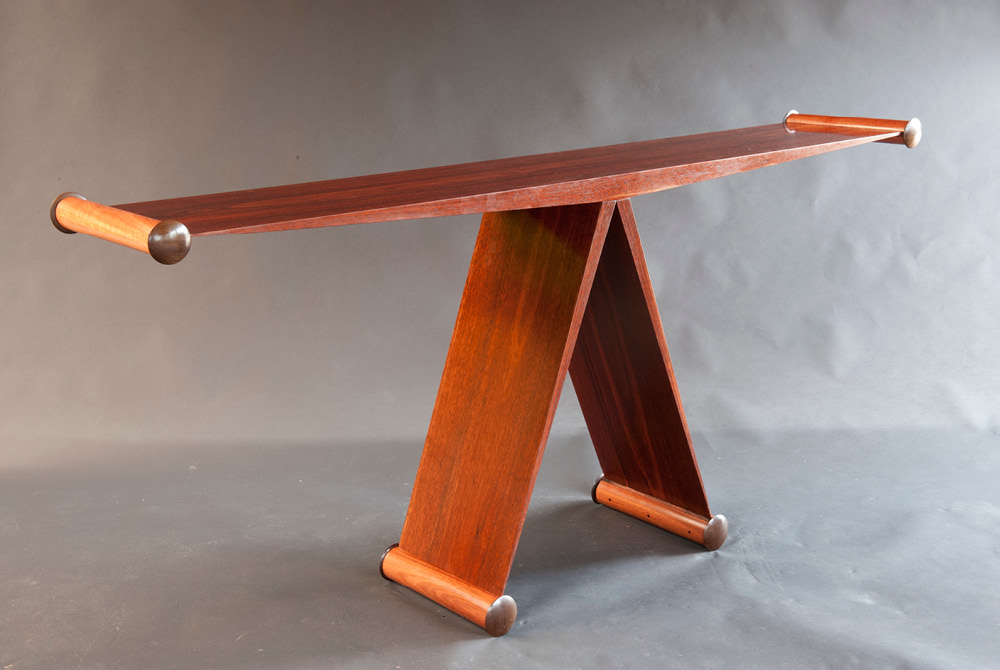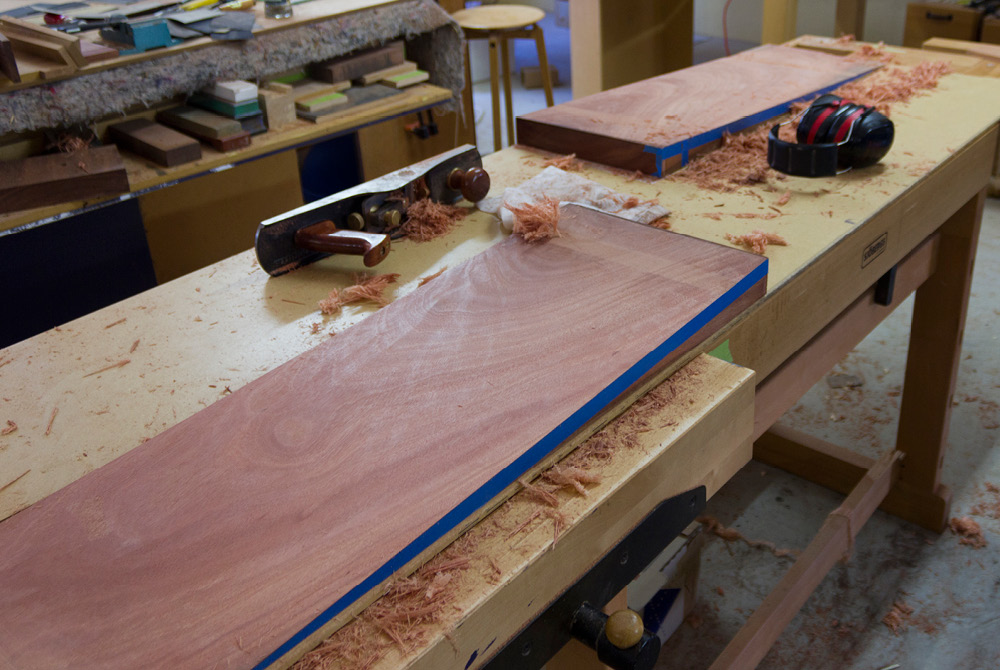Wedge was the first table I designed for the exhibition Design Innovation Play. I just sketched it on a scrap piece of MDF in the workshop, picked the material, had it machined and left it for six months.
I didn’t even draw it on paper. I knew exactly what I wanted to do. The timber sections were the same as Still in so far as thickness, length and width of material goes.
The basic premise was taking a 1500mm long Jarrah board 300mm wide and 50mm thick and with two cuts you have the top and the two legs. Yet another demonstration of using solid timber rather than veneer. I loved the simplicity and elegance of that. It sat there for months machined and ready to go, and this exhibition gave me the chance to say well “this is the time to do it.”
And it bought me back to other methodologies I’ve used in the past to strengthen the angle joint between the table’s top and legs. I was going to used embedded steel rod, which I’ve done before, and that’s an interesting way to go about it.
My plan was to find somebody with a good bandsaw and get it cut, but no one had a bandsaw to suit. So there I was out there fixing up my old rusted thing that’s been used as a bush bandsaw to cut burls for small products. I spent at least a week tidying it up, getting new blades and preparing for the cut. It had to be cut from the edge and it’s 300mm high, the cut was really challenging.
It’s a good illustration of what happens when you think about the way you want to do things. Everyone’s doing veneers, so we have all kinds of machinery built for that, they are not built for fine bandsaw work, for accurate, heavy and large cuts. So if that’s the way you’re going to design, then you need the appropriate machinery. The machines will follow suit in time.
The ends aren’t supported so I put cylinders in and had Jim Homann turn decorative burl cap-like ends. And that became the theme for the tables that followed. In a quasi-progressive line of thinking, Wedge was first, then came Ellipse, and that’s interesting because I’m still working with that same section of timber used on Still, doing different things with it.
Most importantly this project reinforces George Ingham’s belief that you achieve the greatest efficiencies in working from large sections down to small, instead of the other way around.
Excerpt from conversations between David Mac Laren and Stan d’Argeavel.



